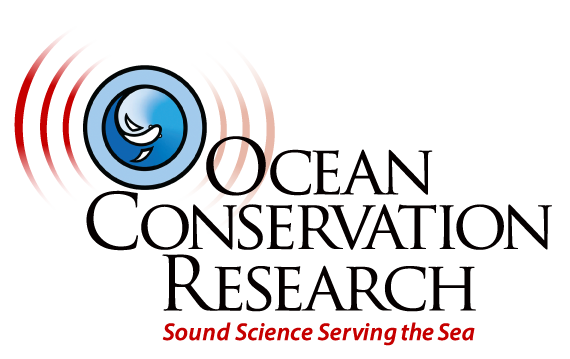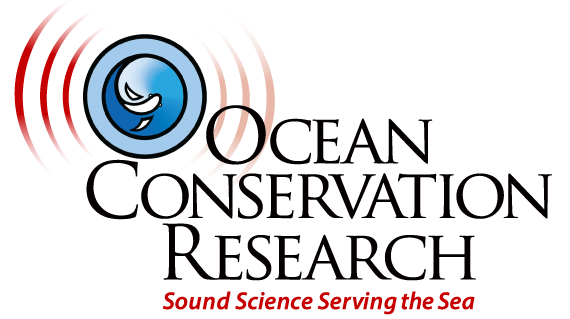Cook Inlet Project
Protecting whales & their food source from the impacts of seismic airgun blasting
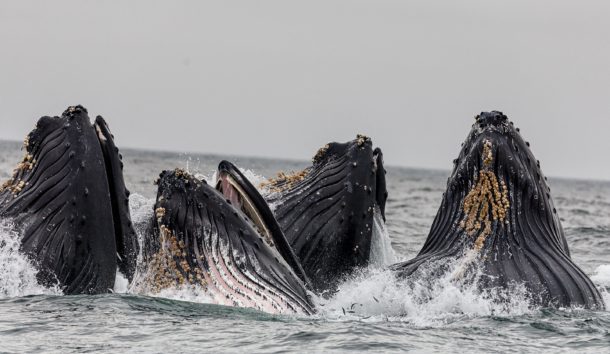
Humpback whales feeding on zooplankton, the small critters that form the basis of our ocean’s food web.
Ocean Conservation Research is working with the University of Washington, the National Oceanographic and Atmospheric Administration (NOAA) and the Bureau of Ocean Energy Management (BOEM) instrumenting a seismic survey taking place in the lower Cook Inlet. The group is deploying a set of hydrophones to measure sound levels and propagation characteristics in a very dynamic area with 18 – 20 ft. tidal swings, and rapid water density changes as fresh and salt water exchanges with the ebb and flood tides.
The surveys will be conducted by geophysical contractor Polarcus, who will tow an array of seismic airguns throughout a 420 sq. mi. area. Airguns generate high-energy impulses which propagate into the seafloor, allowing operators to “see” into the earth substrate to depths of 10km. But the noises also propagate horizontally and can be heard hundreds of miles away from the survey.
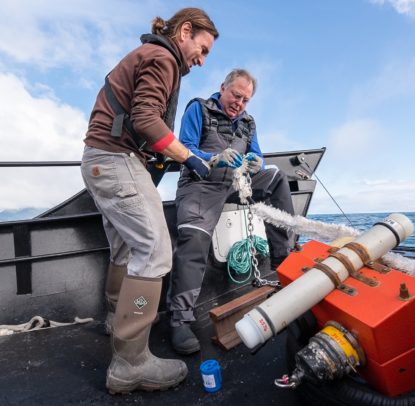
Manolo Castellote with NOAA and Michael Stocker deploy one of four hydrophone moorings in the lower Cook Inlet to monitor a 420 sq. mi. seismic survey being performed by Polarcus, under contract to oil company Hilcorp
This “collateral noise” is proven to be disruptive to marine mammals, fish, and marine invertebrates. And recently there is evidence that the impulses may also damage or kill marine zooplankton – the foundation of the marine food chain.
The project aims to collect the following data on the survey:
- Any behavioral changes in beluga whales in the upper Cook Inlet.
- Any behavioral changes in the humpback and fin whales in the lower Cook Inlet.
- Any evidence of elevated mortalities in marine zooplankton following the survey.
- Horizontal propagation characteristics across 80 miles of water under dynamic conditions.
We are working with Marine Mammologist, Manolo Castellote from Univ. of Washington and NOAA, and will be providing geophysical data to Verna Gill from NOAA Fisheries, and Geophysicists Mike Unger, Loren Zeigler, and Caleb Jennings from BOEM to do some of the geophysical analysis.
We foresee at least five papers coming out of this effort, which should add significantly to our understanding of seismic impacts on marine life, and propagation characteristics of seismic airgun arrays in dynamic, and relatively shallow waters.
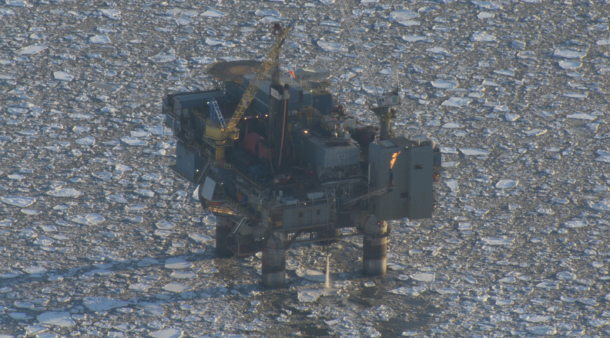
Ominous oil rig in Alaska’s Cook Inlet
